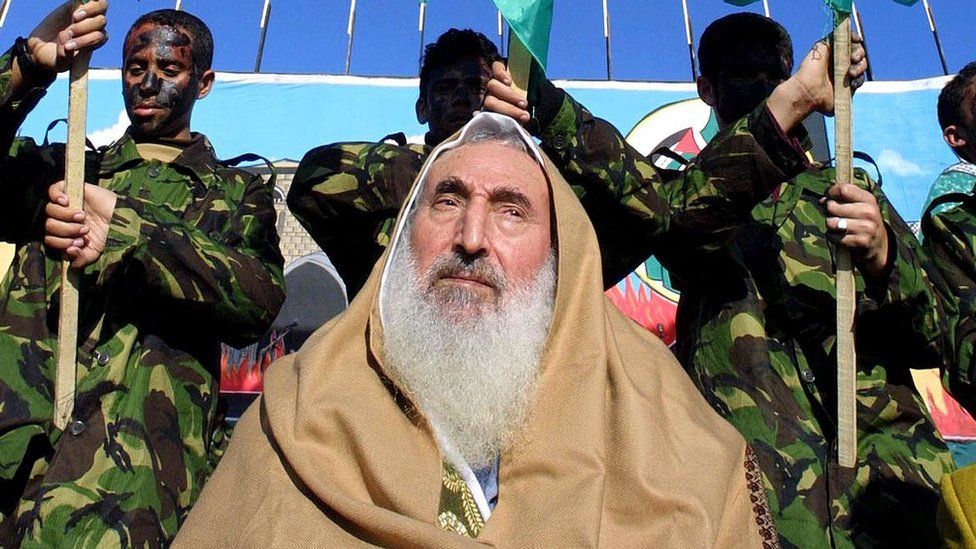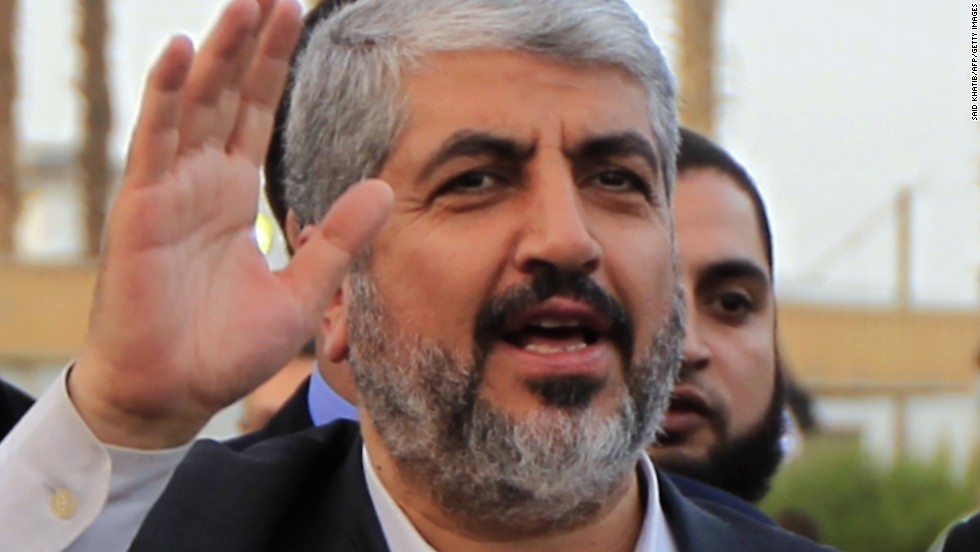Historical Context and Leaders of Hamas

Hamas, an acronym for the Islamic Resistance Movement, is a Palestinian Islamist organization that emerged in the late 20th century. Its roots lie in the complex and often tumultuous history of the Israeli-Palestinian conflict.
Founding Principles and Key Figures
Hamas was founded in 1987, during the First Intifada, a Palestinian uprising against Israeli occupation. The organization’s founding principles are rooted in Islamic ideology, advocating for the establishment of an Islamic state in all of historical Palestine, including areas currently under Israeli control. Key figures in its formation include Sheikh Ahmed Yassin, who served as its spiritual leader and founder, and Abdel Aziz Rantisi, who became a prominent leader after Yassin’s assassination.
Leadership Structure
Hamas operates with a dual leadership structure, comprising a political wing and a military wing. The political wing focuses on political activities, including participation in elections and diplomatic negotiations. The military wing, known as the Izz ad-Din al-Qassam Brigades, is responsible for armed resistance against Israel. The leadership structure of Hamas is hierarchical, with a supreme council that oversees both wings and a political bureau responsible for day-to-day operations.
Timeline of Significant Events and Leaders
- 1987: Hamas is founded during the First Intifada. Sheikh Ahmed Yassin emerges as a key figure, advocating for armed resistance against Israel.
- 1993: The Oslo Accords are signed, aiming to resolve the Israeli-Palestinian conflict through a two-state solution. Hamas rejects the accords, viewing them as a betrayal of Palestinian rights.
- 2006: Hamas wins the Palestinian legislative elections, marking a significant shift in the political landscape. Ismail Haniyeh becomes Prime Minister.
- 2007: Hamas takes control of the Gaza Strip following a brief civil war with Fatah, the rival Palestinian faction. This event leads to a split in the Palestinian government, with Hamas controlling Gaza and Fatah controlling the West Bank.
- 2012: Hamas launches a series of rocket attacks on Israel, triggering a military conflict known as Operation Pillar of Defense. The conflict lasts for eight days and results in a ceasefire.
- 2014: Hamas and Israel engage in another major conflict, Operation Protective Edge. The conflict lasts for 51 days and results in a ceasefire.
- 2017: Hamas elects Yahya Sinwar as its new leader in Gaza.
Current Leaders and their Positions: Israel Hamas Leader

The leadership of Hamas is a complex and evolving structure, with various individuals holding key positions and influencing the organization’s direction. Understanding the current leadership and their roles is crucial to comprehending Hamas’s policies and strategies.
Leadership Structure and Roles
Hamas’s leadership structure is hierarchical, with the top decision-making body being the Shura Council. This council, comprising senior Hamas members, sets the organization’s overall policies and strategies. The political bureau, based in exile, manages the organization’s political activities and oversees its external relations. The military wing, known as the Izz ad-Din al-Qassam Brigades, is responsible for military operations and defense.
- Ismail Haniyeh: Haniyeh currently serves as the head of Hamas’s political bureau. He is considered a moderate voice within the organization and has been involved in negotiations with Israel in the past. Haniyeh’s leadership has been characterized by efforts to maintain unity within Hamas and navigate the complexities of the Palestinian political landscape.
- Yahya Sinwar: Sinwar is the current leader of Hamas in the Gaza Strip. He is a hardliner known for his strong stance against Israel. Sinwar has been instrumental in organizing and executing military operations against Israel. He is seen as a powerful figure within Hamas, with significant influence over the organization’s military strategy.
- Khaled Mashal: Mashal is a veteran Hamas leader who previously served as the head of the political bureau. He is known for his strong anti-Israel views and his support for armed resistance. Mashal has been involved in negotiations with Israel, but he remains a vocal critic of the Israeli government and its policies.
Negotiation Approaches and Conflict with Israel
Hamas’s approach to negotiations with Israel has been marked by a combination of pragmatism and principle. The organization has engaged in negotiations in the past, but it has also maintained a strong commitment to armed resistance against Israel. Hamas’s leadership has emphasized the importance of securing Palestinian rights, including the right to self-determination, and has expressed a willingness to negotiate a lasting peace agreement. However, the organization has also maintained its goal of dismantling the state of Israel.
Hamas’s relationship with Israel has been characterized by conflict and violence. The organization has launched numerous attacks against Israel, including rocket attacks and suicide bombings. Israel, in turn, has responded with military operations and airstrikes. This cycle of violence has had a devastating impact on both Palestinians and Israelis, and it has hampered efforts to achieve a peaceful resolution to the conflict.
Leadership Styles and Ideologies
The different leaders of Hamas have varied leadership styles and ideologies. Haniyeh, for example, is seen as a more pragmatic leader who is willing to engage in negotiations and compromise. Sinwar, on the other hand, is known for his hardline stance and his strong support for armed resistance.
“Hamas is a Palestinian Islamic resistance movement that seeks to establish an Islamic state in all of historic Palestine, including the territory currently controlled by Israel.”
Mashal is a charismatic leader who has been influential in shaping Hamas’s ideology and strategy. He is known for his strong anti-Israel views and his unwavering commitment to armed resistance.
The different leadership styles and ideologies within Hamas have contributed to the organization’s internal dynamics and its approach to the Israeli-Palestinian conflict.
Hamas’ Relationship with Israel

The relationship between Hamas and Israel has been characterized by deep-seated conflict and a lack of trust. This complex and volatile dynamic has its roots in the ongoing Israeli-Palestinian conflict, which has persisted for decades.
History of Conflict and Negotiations
The history of conflict between Hamas and Israel is marked by violence, political tensions, and a series of negotiations that have ultimately failed to achieve a lasting peace. The conflict has been fueled by a complex interplay of factors, including territorial disputes, differing interpretations of history, and deeply rooted political and religious differences.
- 1987: The First Intifada, a Palestinian uprising against Israeli occupation, emerges. Hamas, founded in 1987, becomes a key player in the resistance movement.
- 1993: The Oslo Accords, signed between Israel and the Palestine Liberation Organization (PLO), aim to establish a Palestinian state. However, Hamas rejects the accords, viewing them as a betrayal of the Palestinian cause.
- 2006: Hamas wins Palestinian parliamentary elections, marking a significant shift in the political landscape. This victory leads to international isolation and sanctions against Hamas, as many countries consider the group a terrorist organization.
- 2007: Hamas takes control of the Gaza Strip, leading to a de facto division of the Palestinian territories between Hamas in Gaza and the Palestinian Authority in the West Bank.
- 2008-2009: Israel launches Operation Cast Lead, a military offensive against Hamas in Gaza, resulting in significant civilian casualties. This event further escalates tensions and deepens the animosity between the two sides.
- 2012: Israel launches Operation Pillar of Defense, another military operation targeting Hamas in Gaza. This conflict again leads to heavy civilian casualties and intensifies the cycle of violence.
- 2014: Israel launches Operation Protective Edge, a major military operation in Gaza, following a surge in rocket attacks from Hamas. The conflict results in widespread destruction and a high number of casualties on both sides.
- 2021: The 11-day conflict between Israel and Hamas, known as the “Gaza War,” erupts following tensions over evictions of Palestinian families in East Jerusalem. The conflict leads to heavy civilian casualties and widespread destruction in Gaza.
Key Issues and Challenges
Several key issues and challenges contribute to the ongoing conflict between Hamas and Israel:
- Territorial Disputes: The conflict revolves around the control of land, particularly the West Bank and East Jerusalem, which are claimed by both Palestinians and Israelis.
- Security Concerns: Israel cites security concerns as a justification for its actions, pointing to Hamas’s history of launching rockets and carrying out attacks against Israeli civilians. Hamas, on the other hand, argues that its actions are a response to Israeli occupation and oppression.
- Political Disagreements: The two sides have fundamental disagreements over the nature of a future Palestinian state, the status of Jerusalem, and the right of return for Palestinian refugees.
- International Pressure: The conflict is also influenced by international pressure and intervention. The international community has been divided on how to address the conflict, with some supporting Israel’s security concerns and others emphasizing the need for a two-state solution.
- Internal Divisions: The Palestinian political landscape is fragmented, with various factions vying for power. This internal division has hampered efforts to achieve unity and a coherent negotiating position.
Potential Pathways for Peaceful Resolution and Reconciliation, Israel hamas leader
Despite the ongoing conflict, there are potential pathways for peaceful resolution and reconciliation between Hamas and Israel:
- Two-State Solution: The establishment of a sovereign Palestinian state alongside Israel is widely seen as the most viable path to peace. This would require both sides to make concessions on territory, security, and other issues.
- Negotiations: Direct negotiations between Hamas and Israel are essential for reaching a lasting agreement. This would require a willingness to compromise and a commitment to finding common ground.
- International Mediation: The involvement of international actors, such as the United States, the European Union, and the United Nations, could facilitate negotiations and provide support for a peace process.
- Economic Cooperation: Building economic ties between Israel and Palestine could foster cooperation and create incentives for peace. This could include joint projects in areas such as agriculture, tourism, and infrastructure.
- Addressing Root Causes: Addressing the underlying issues that contribute to the conflict, such as poverty, unemployment, and lack of political empowerment, is crucial for long-term peace. This requires addressing the needs of the Palestinian people and providing them with opportunities for a better future.
Israel hamas leader – The Israel-Hamas conflict is a complex and serious situation, but let’s be honest, sometimes you just need a good laugh. Maybe a laugh that comes from seeing your favorite team’s logo proudly displayed on your furniture, like these buffalo bills chair covers.
They’re a surefire way to show your team spirit, even if you’re just watching the game at home. Anyway, back to the Israel-Hamas situation… it’s a real head-scratcher, isn’t it?
The Israel-Hamas conflict is a complex issue with no easy solutions. But one thing we can all agree on is the importance of protecting our investments, whether it’s our homes, our families, or, in this case, our outdoor furniture. If you’re looking for a way to keep your egg chair looking its best, consider a southport patio egg chair cover.
It’s like a peace treaty for your patio, ensuring your furniture stays comfy and protected, even amidst the geopolitical storm brewing in the Middle East.
